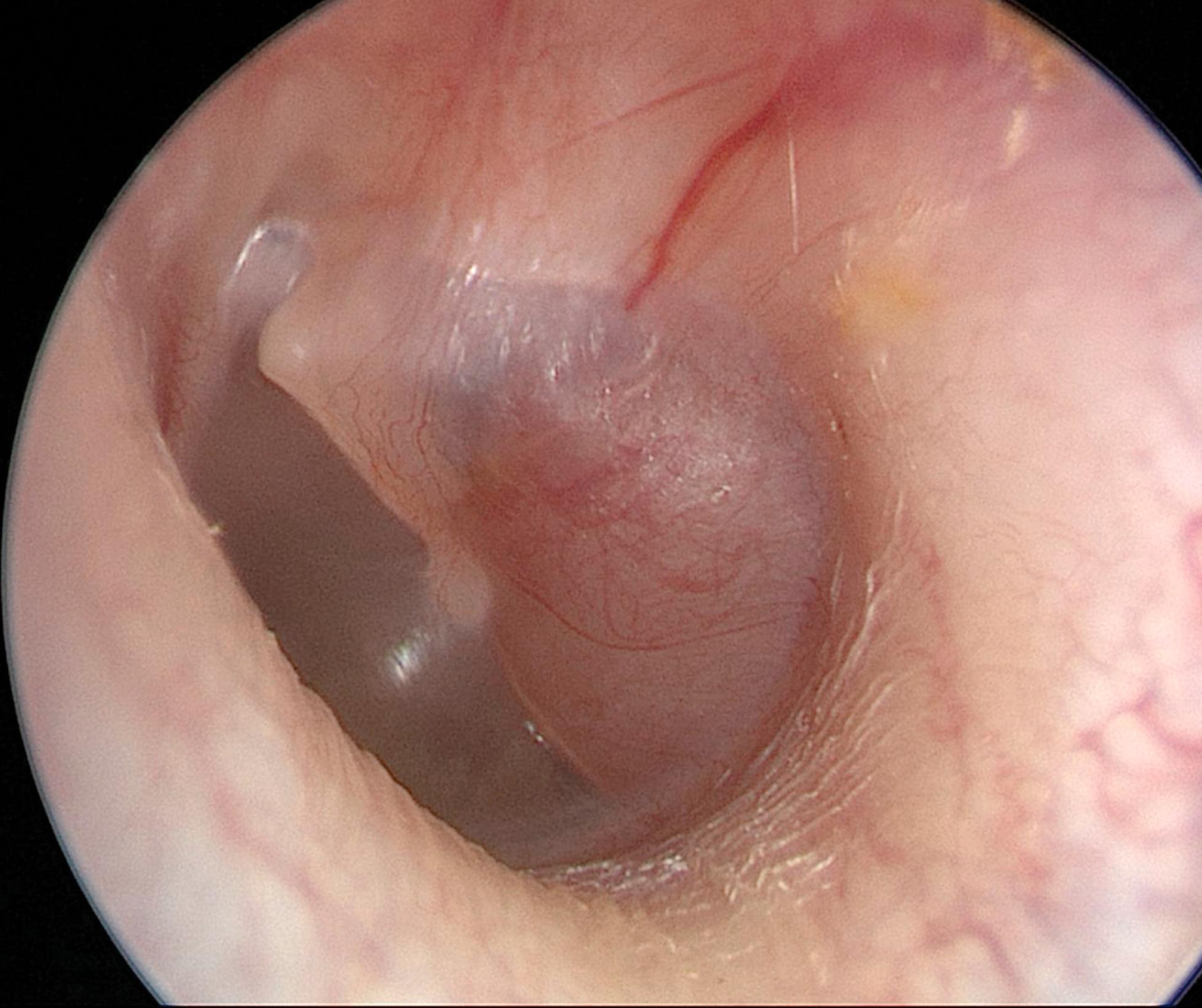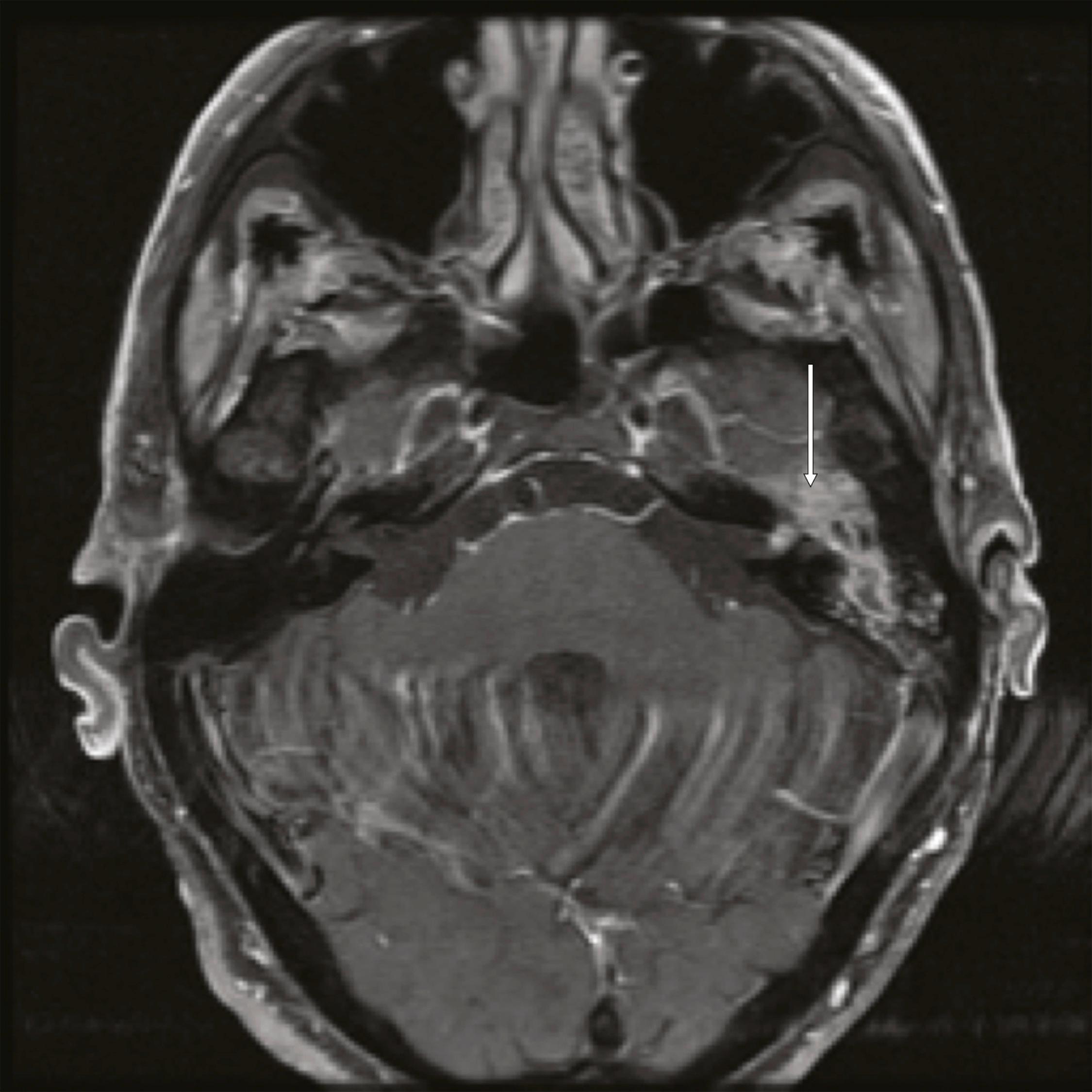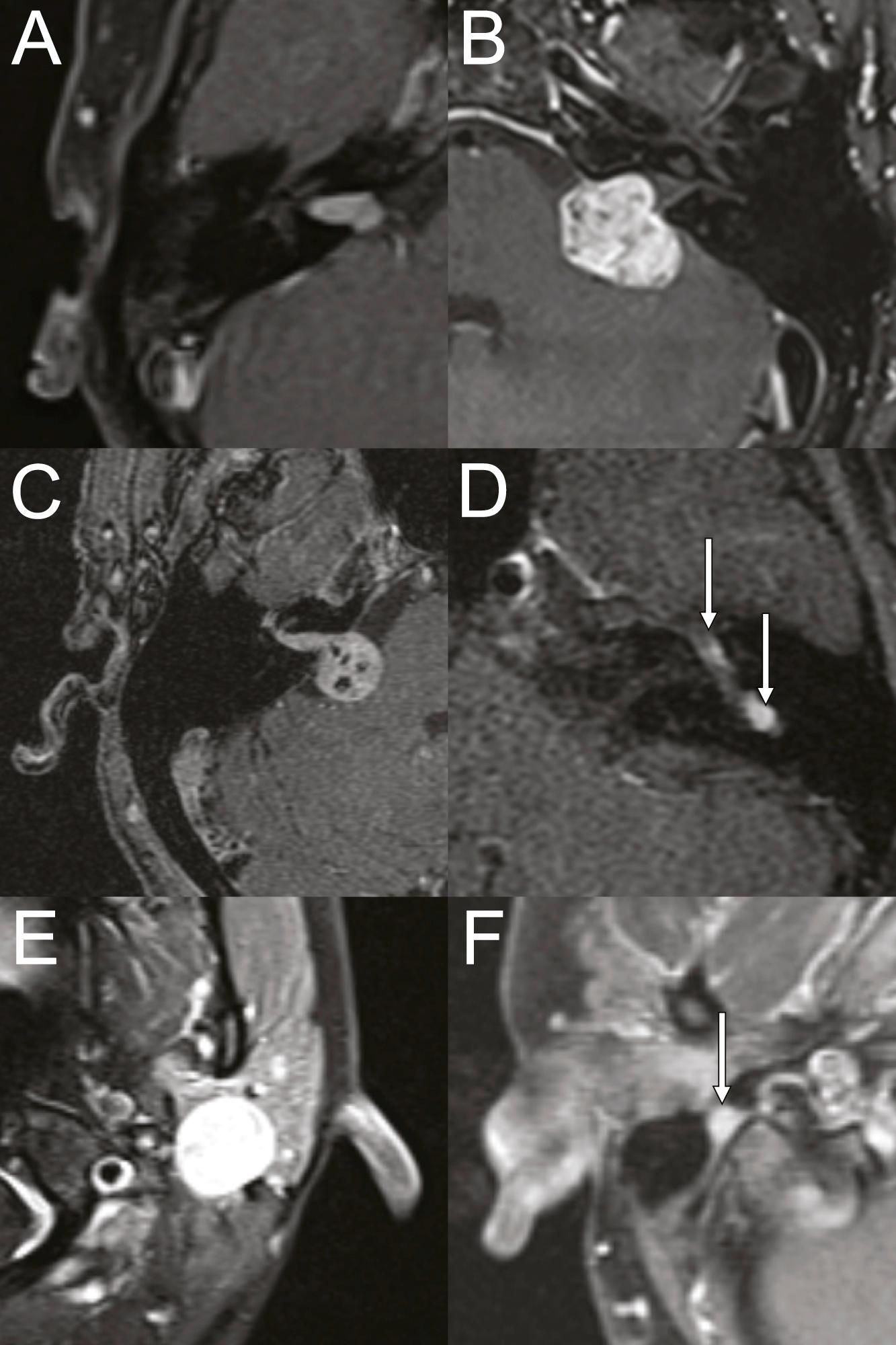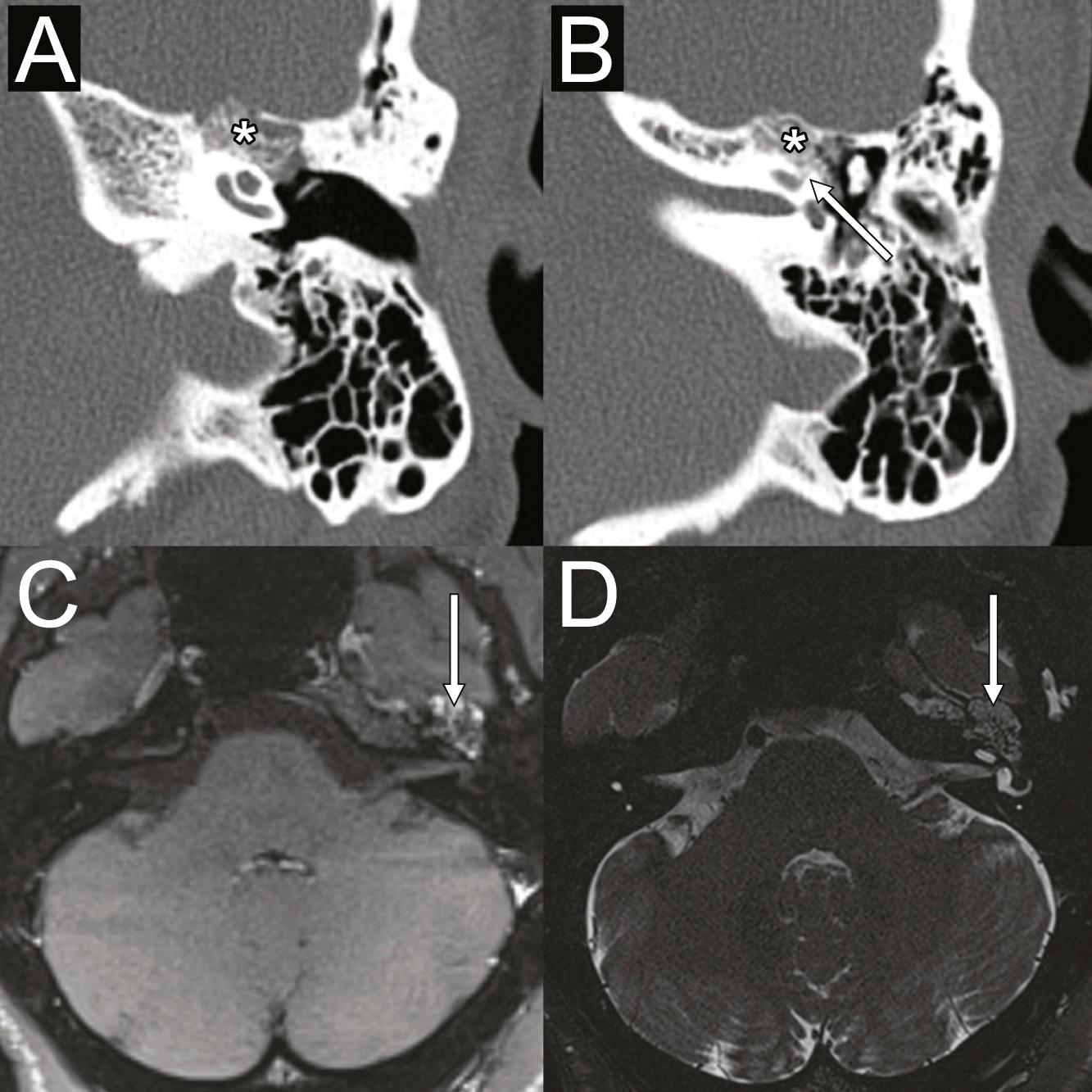Physical Address
304 North Cardinal St.
Dorchester Center, MA 02124
![]() Please access Videos to view the corresponding videos for this chapter.
Please access Videos to view the corresponding videos for this chapter.
Tumors of the facial nerve are rare causes of facial paralysis. The two most common tumors are facial nerve schwannomas (FNS), which are intrinsic to the nerve, and facial nerve hemangiomas, or geniculate ganglion hemangiomas (GGH), which are extraneural in origin. This chapter focuses on these two types of facial nerve tumors. Much rarer lesions include glomus facialis, a paraganglioma characterized by classic imaging and histopathologic features and lack of jugulocarotid spine involvement, and granular cell tumors of the facial nerve. The techniques discussed can also be applied to other facial nerve neoplasms.
Because of their subtle presentation, facial nerve tumors may be difficult to diagnose and require a high degree of clinical suspicion. , The presenting symptoms vary with the tumor location, size, and histology. FNS that arise in the internal auditory canal (IAC) and cerebellopontine angle (CPA) may manifest with a progressive sensorineural hearing loss similar to that caused by a vestibular schwannoma, and the true diagnosis may be established only at surgery. , Patients with neurofibromatosis type II often develop multiple cerebellopontine angle tumors [including tumor(s) of the facial nerve] rather than an isolated vestibular schwannoma. In contrast, those in the middle ear and mastoid may only present with conductive hearing loss until facial nerve symptoms develop. Occasionally, asymmetric enhancement of the facial nerve or enlargement of the geniculate ganglion in the setting of a primarily CPA/IAC FNS may be visible on MRI (see “Imaging”). In a patient with a suspected vestibular schwannoma, the presence of coexisting facial nerve symptoms (rare with vestibular schwannoma) should warn the surgeon that a facial nerve tumor may be present. ,
FNS usually do not cause symptoms until they are fairly large and may manifest initially with hearing symptoms. , , Tumors arising in the middle ear may contact the ossicles and cause conductive hearing loss ( Fig. 28.1 ). In such cases, when a mass behind the tympanic membrane is not visible, the patient may be suspected to have otosclerosis, and the correct diagnosis is made during tympanotomy for stapedectomy. Rarely, a facial nerve tumor involving the mastoid segment may present as a skin-covered external auditory canal mass resulting in conductive hearing loss from obstruction or secondary keratin accumulation. When a mass is encountered in either situation, a biopsy must not be performed because facial nerve paralysis is likely to develop postoperatively (see “Pitfalls of Surgery”), and imaging should be obtained to characterize the lesion better. , , ,

If the tumor erodes into the labyrinth (typically, the lateral semicircular canal at the external genu), the patient may present with dizziness. On examination, the fistula test result may be positive.
FNS may present with cervical extension or as an isolated parotid mass. Most commonly, the lesion is suspected to represent a benign primary parotid neoplasm. Imaging that reveals a well circumscribed, avidly enhancing lesion centered on the stylomastoid foramen with or without extension into the temporal bone should raise suspicion for FNS.
Unlike most FNS, facial nerve hemangiomas paradoxically cause severe symptoms when very small. Similar to FNS, hemangiomas can occur in the IAC and manifest as vestibular schwannomas. They usually cause sensorineural hearing loss that is severe for the size of the tumor. Hemangiomas are extraneural and cause paralysis by compression or possibly by parasitizing blood supply to the geniculate ganglion , but the small size of the tumor can make diagnosis by imaging studies very difficult. A high degree of clinical awareness is required.
Patients with either tumor type may present with facial nerve symptoms. Typically, these patients have recurrent Bell’s palsy, although the facial nerve recovery is less complete with each episode. Frank hemifacial spasm or spasms of isolated facial muscle groups can be present in some patients. Others exhibit sudden facial paralysis or slow, progressive facial paralysis. When evaluating a patient with atypical facial nerve symptoms, one must always suspect a facial nerve tumor and obtain appropriate imaging.
As facial nerve involvement by another neoplasm is far more common than a primary facial nerve tumor, it is vital to recognize and evaluate this possibility in patients with insidious onset facial paralysis. One should suspect malignancy within the parotid gland with facial nerve involvement in patients with a history of facial skin cancers and symptoms of pain associated with a parotid mass ( Fig. 28.2 ). Gradual onset of facial paralysis often in a segmental fashion (i.e., starting with the lower division and later involving all divisions) is suspicious for perineural invasion. The histopathologies commonly associated with occult intratemporal facial nerve involvement include adenocarcinoma, squamous cell carcinoma, salivary ductal carcinoma, and adenoid cystic carcinoma.

High-resolution magnetic resonance imaging (MRI) with gadolinium may be sufficient to detect most facial nerve tumors ( Fig. 28.3 ). As discussed above, careful interpretation of the imaging is critical. For example, the lesions in Fig. 28.3A and B are indistinguishable from vestibular schwannoma, but those in Fig. 28.3C and D have more characteristic imaging features. The tumor in Fig. 28.3C demonstrates enhancement within the CPA and IAC that extends into the region of the geniculate ganglion. In Fig. 28.3D , involvement of the tympanic and mastoid segments of the facial nerve can easily be visualized. Lesions of the stylomastoid foramen ( Fig. 28.3E ) and parotid ( Fig. 28.3F ) may be mistaken for primary salivary gland neoplasms with or without facial nerve involvement and should be placed in the appropriate clinical context.

Small facial hemangiomas at the geniculate ganglion may require high-resolution computed tomography (CT) ( Fig. 28.4A and B ). These tumors exhibit characteristic bony changes, termed honeycomb bone . Correlating CT with MRI ( Fig. 28.4C and D ) can be helpful to assess the extent of the tumor, particularly if the lesion extends proximally into the IAC. Medial extension has important ramifications regarding selection of the surgical approach.

Electroneuronographic (also known as evoked electromyography) results may be abnormal in patients with facial nerve tumors, even in the presence of clinically normal function. Facial electromyography may reveal a pattern of simultaneous denervation and reinnervation in patients with tumors. This pattern is seen in slowly progressive, pathological processes, and would not be expected with a rapid insult to the facial nerve, such as that in Bell’s palsy.
Observation may be a good option for selected patients. For an older patient in poor health who has a small FNS and good facial function, observation may be the best strategy. Younger patients with good facial function may also be followed, but they must be aware of the possible risk to the ultimate facial nerve outcome and to their hearing if surgery is delayed. However, in many cases, the facial function and hearing can remain stable. , It is likely that the likelihood of growth and growth rate of an observed FNS is similar to that of an observed vestibular schwannoma. In one series, only 6 of 31 (19%) patients with observed FNS experienced deterioration in facial function during the course of observation. In some cases, we follow patients until they show greater than 50% denervation by electroneuronography. When they reach this degree of denervation, we are concerned that facial nerve grafting after further loss of neural “firepower” would ultimately result in poor facial function. Others recommend delaying surgery until the patient has a House-Brackmann grade IV/VI or poorer function. The loss of motor end plates and muscle atrophy that occurs with long-standing (greater than 18 months) facial paralysis further reduces the likelihood of functional improvement with nerve grafting.
During an interval of observation, patients may experience episodes of worsened facial function. These cases should be managed with corticosteroid therapy. For those with recurrent facial weakness and tumors within the temporal bone, decompression should be offered and will be discussed in the next section.
Bony decompression of the facial nerve and tumor is intended to reduce the pressure on the nerve fascicles and to reduce nerve ischemia. This is an option for selected patients with small tumors for whom a facial palsy is an unacceptable outcome, because it can give them several more years of normal facial function. Patients with tumors involving the geniculate ganglion and/or labyrinthine segment of the facial nerve may experience a higher likelihood of progressive facial weakness. Similar to the pathophysiology of Bell’s palsy, this is considered related to compression within the dense otic capsule bone and to vascular insufficiency. In contrast, lesions of the tympanic and mastoid segments can often “self-decompress” by expanding the bone in these areas.
When the tumor becomes neurosurgically significant, it is then resected. Decompression can be accomplished through the middle fossa or translabyrinthine approach, depending on the segments of the facial nerve that are involved and hearing status. Decompression of the neighboring nerve segments may also provide a low-morbidity means of prolonging good facial function (for example, decompressing the mastoid segment for a tumor at the stylomastoid foramen).
Become a Clinical Tree membership for Full access and enjoy Unlimited articles
If you are a member. Log in here